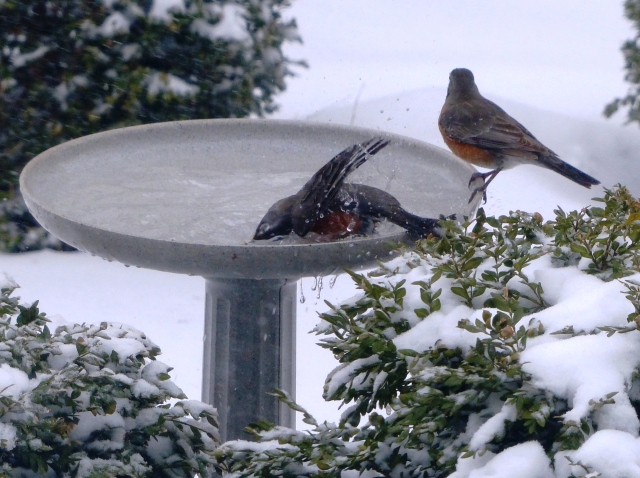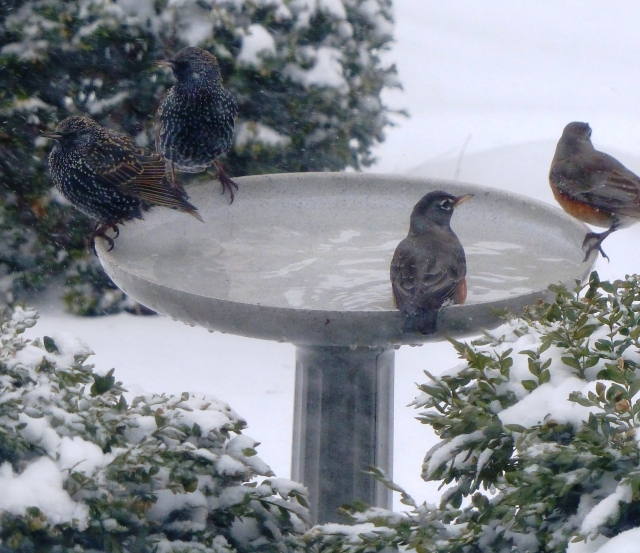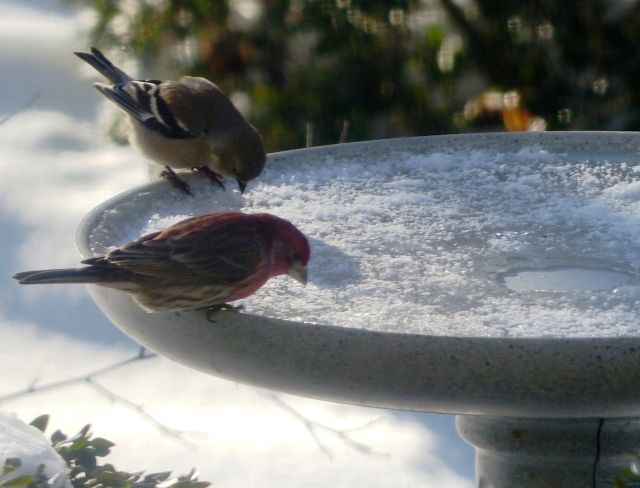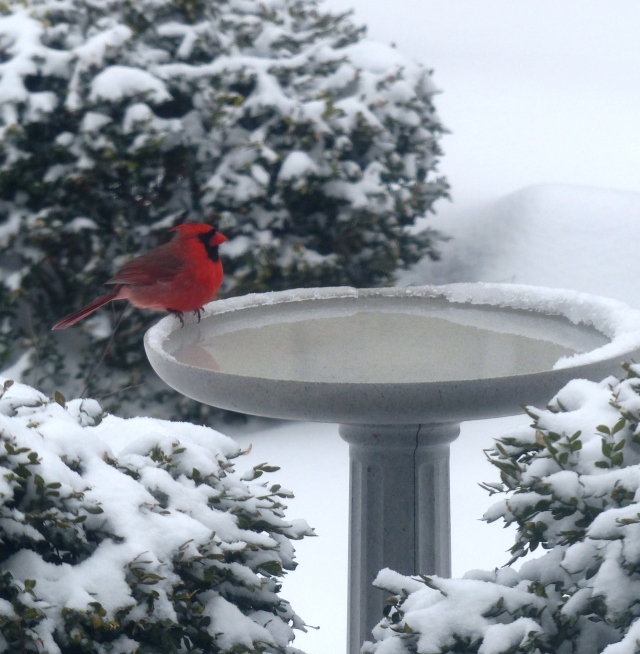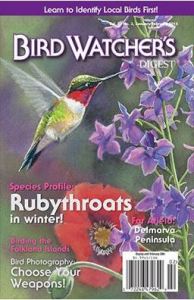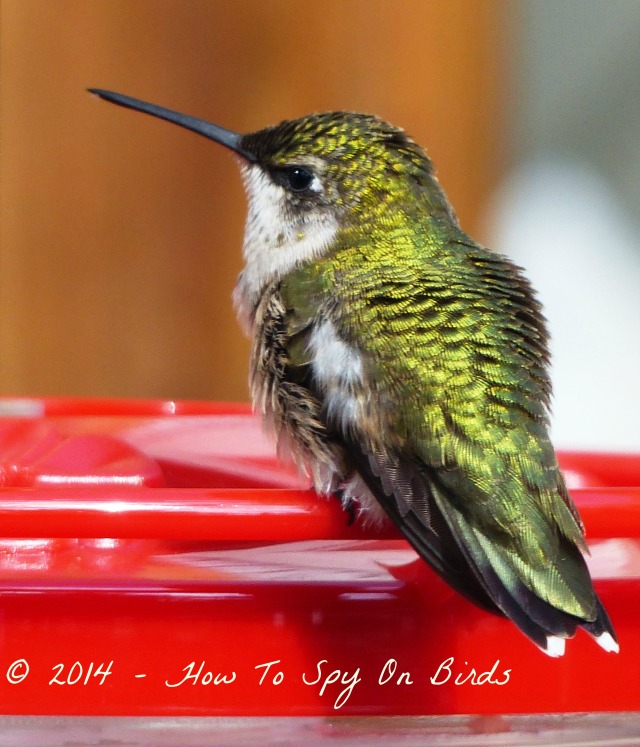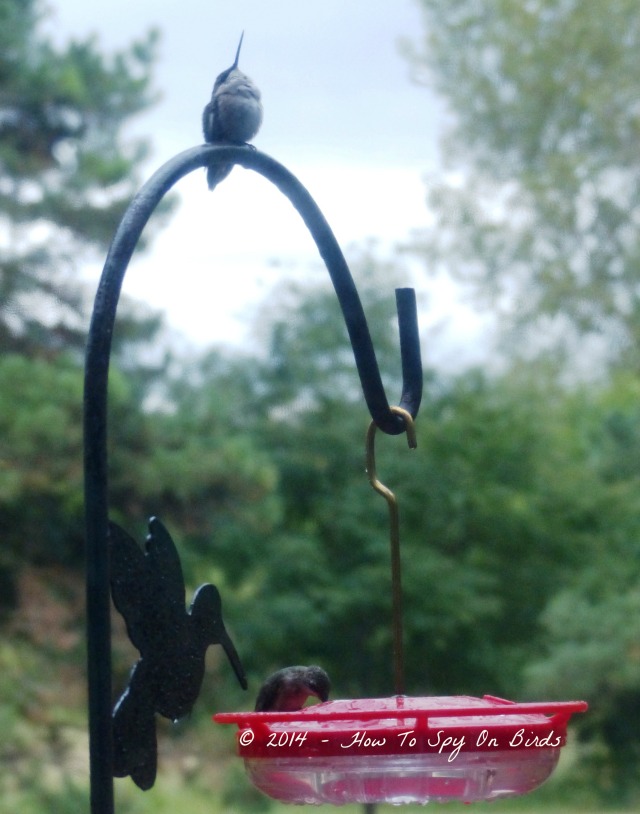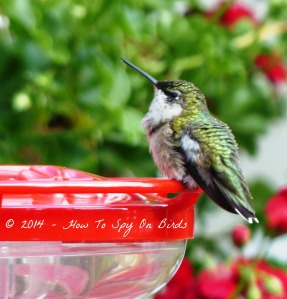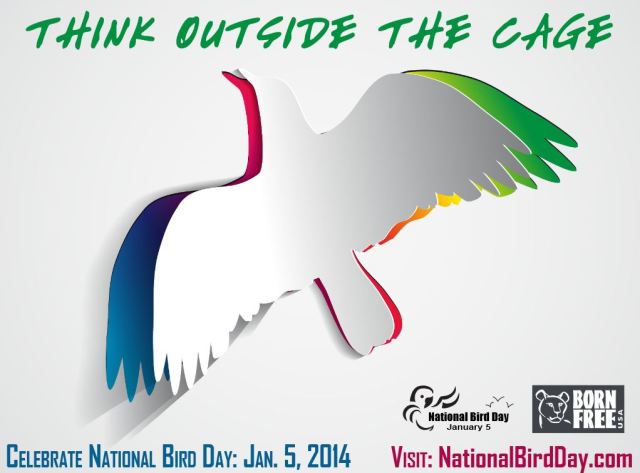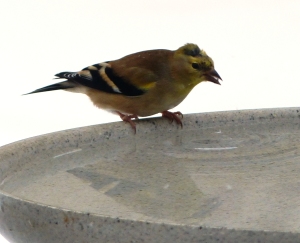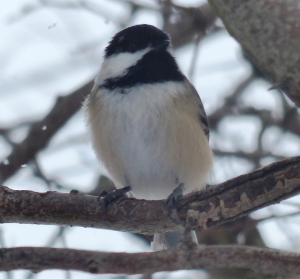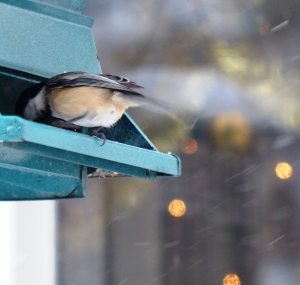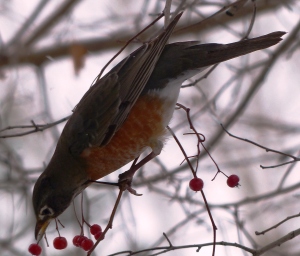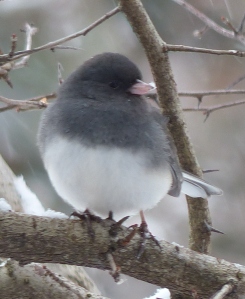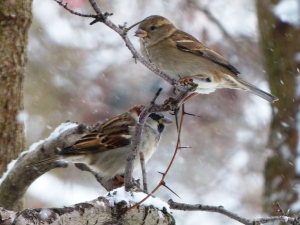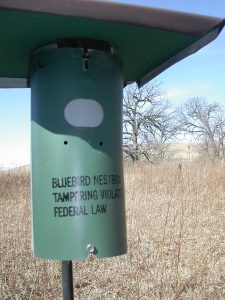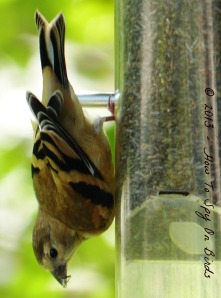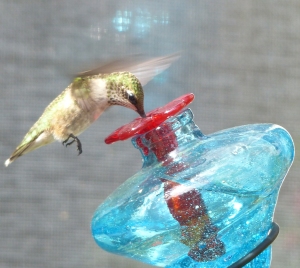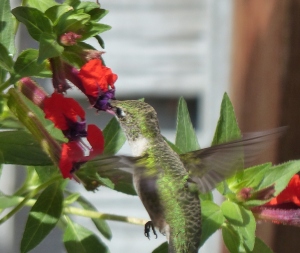We’re still in the grips of winter with far below average temperatures.
While the February average is in the high 30’s here in Chicagoland, we’re still experiencing bone-chilling minus-zero air temperatures with wind chills in the -20’s.
Snow mountains from the blizzard that dumped around 17 inches on us a few weeks ago still weigh down the garden greenery.
Birds actually warm themselves in the heated bird bath in this bitter cold.
At times like these, it’s hard to keep the pool all to yourselves.
I imagine one of the Robins saying to the other, “Just ignore them and maybe they’ll go away.”
Indeed, the European Starlings seem to be trying to look just as disinterested.
Do wild birds observe Ground Hog Day?
A Gold Finch and a House Finch see their shadows against a mostly-frozen bird bath in the cold February morning sun.
How many more weeks of winter?????
But wait!
What’s that I hear?
The song of a …. Northern Cardinal!
The chase is on! I spied one male Cardinal chasing another from tree to tree at dusk.
During the day I hear them calling.
In spite of the frozen earth, days are lengthening and the first signs that birds are beginning to defend territories awaken hope that warmer days are ahead.
My Black-capped Chickadees are going to begin looking for nesting spots.
It’s time to place their nest box in the pine tree.
And for those of you waiting patiently for the Ruby Throat Hummingbirds ….
keep an eye on their 2015 migration map!

